
Humphrey DeForest Bogart, nicknamed Bogie, was an American actor. His performances in classic Hollywood cinema made him an American cultural icon. In 1999, the American Film Institute selected Bogart as the greatest male star of classic American cinema.
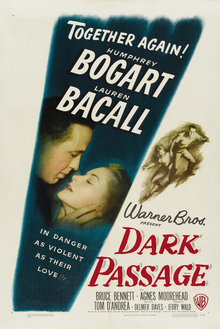
Dark Passage is a 1947 American film noir directed by Delmer Daves and starring Humphrey Bogart and Lauren Bacall. The film is based on the 1946 novel of the same title by David Goodis. It was the third of four films real-life couple Bacall and Bogart made together.

The Harder They Fall is a 1956 American boxing film noir directed by Mark Robson, produced and written by Philip Yordan, based on Budd Schulberg's 1947 novel. It was Humphrey Bogart's final film role. It received an Oscar nomination for Best Cinematography, Black and White, for Burnett Guffey at the 29th Academy Awards.
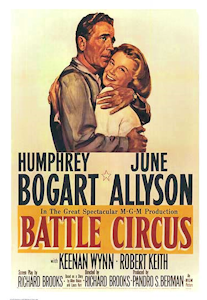
Battle Circus is a 1953 American war film directed by Richard Brooks, who also co-wrote the screenplay with married writing duo Laura Kerr and Allen Rivkin. The movie stars Humphrey Bogart and June Allyson, and costars Keenan Wynn and Robert Keith.
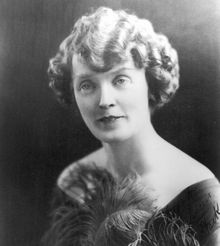
Mabel Stark, whose real name was Mary Ann Haynie, was a renowned tiger trainer of the 1920s. She was referred to as one of the world's first women tiger trainers/tamers. In its belated obituary, The New York Times lauded Stark as "one of the most celebrated animal trainers in a field dominated by men."

Nobody Lives Forever is a 1946 American crime film noir directed by Jean Negulesco and based on the novel I Wasn't Born Yesterday by W. R. Burnett. It stars John Garfield and Geraldine Fitzgerald and features Walter Brennan, Faye Emerson, George Coulouris and George Tobias.

Clyde Raymond Beatty was a famed animal trainer, zoo owner, and circus mogul. He joined Howe's Great London Circus in 1921 as a cage boy and spent the next four decades rising to fame as one of the most famous circus performers and animal trainers in the world. Through his career, the circus impresario owned several circuses, including his own Clyde Beatty Circus from 1945 to 1956.

The Breaking Point is a 1950 American film noir crime drama directed by Michael Curtiz and the second film adaptation of the 1937 Ernest Hemingway novel To Have and Have Not, the first one having featured Humphrey Bogart and Lauren Bacall. It stars John Garfield in his penultimate film role and Patricia Neal.
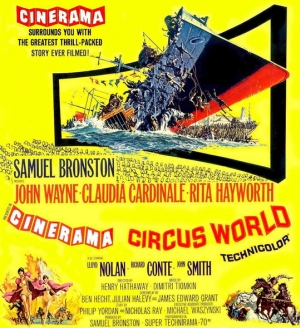
Circus World is a 1964 American Drama Western film starring John Wayne, Claudia Cardinale and Rita Hayworth. It was directed by Henry Hathaway and produced by Samuel Bronston, with a screenplay by Ben Hecht, Julian Zimet, and James Edward Grant, from a story by Bernard Gordon and Nicholas Ray.

Knock on Any Door is a 1949 American courtroom trial film noir directed by Nicholas Ray and starring Humphrey Bogart. The movie was based on the 1947 novel of the same name by Willard Motley. The picture gave actor John Derek his breakthrough role as young hoodlum Nick Romano, whose motto was "Live fast, die young, and have a good-looking corpse."

Billy Rose's Jumbo is a 1962 American musical film released by Metro-Goldwyn-Mayer and starring Doris Day, Stephen Boyd, Jimmy Durante, and Martha Raye. An adaptation of the stage musical Jumbo produced by Billy Rose, the film was directed by Charles Walters, written by Sidney Sheldon, and featured Busby Berkeley's choreography. It was nominated for an Academy Award for the adaptation of its Rodgers and Hart score.

3 Ring Circus is a 1954 American comedy film directed by Joseph Pevney and starring Dean Martin and Jerry Lewis. The picture was shot from February 17 to March 31, 1954 and was released on December 25 by Paramount Pictures. The supporting cast includes Joanne Dru, Zsa Zsa Gabor, Wallace Ford, Sig Ruman, Nick Cravat and Elsa Lanchester.
Manpower is a 1941 American crime melodrama directed by Raoul Walsh and starring Edward G. Robinson, Marlene Dietrich, and George Raft. The picture was written by Richard Macaulay and Jerry Wald, and the supporting cast features Alan Hale, Frank McHugh, Eve Arden, Barton MacLane, Ward Bond and Walter Catlett.

Kid Galahad is a 1937 American sports drama film directed by Michael Curtiz and starring Edward G. Robinson, Bette Davis, Humphrey Bogart and, in the title role, rising newcomer Wayne Morris. A boxing film, it was scripted by Seton I. Miller and distributed by Warner Brothers. It was remade in 1941, this time in a circus setting, as The Wagons Roll at Night, also with Bogart, and in 1962 as an Elvis Presley musical. The original version was re-titled The Battling Bellhop for television distribution in order to avoid confusion with the Presley remake.

Gay's Lion Farm was a public selective breeding facility and tourist attraction just west of the south-east junction of Peck Road and Valley Boulevard in El Monte, California. It operated from 1925 through 1942, when it was closed temporarily due to wartime meat shortages. It never reopened.
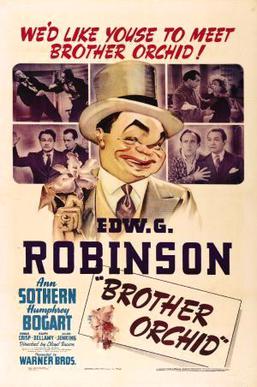
Brother Orchid is a 1940 American crime/comedy film directed by Lloyd Bacon and starring Edward G. Robinson, Ann Sothern and Humphrey Bogart, with featured performances by Donald Crisp, Ralph Bellamy and Allen Jenkins. The screenplay was written by Earl Baldwin, with uncredited contributions from Jerry Wald and Richard Macauley, based on a story by Richard Connell originally published in Collier's Magazine on May 21, 1938. Prior to the creation of the movie version of Connell's story, a stage adaptation was written by playwright/novelist Leo Brady. The script was originally produced at Catholic University of America in Washington, D.C..
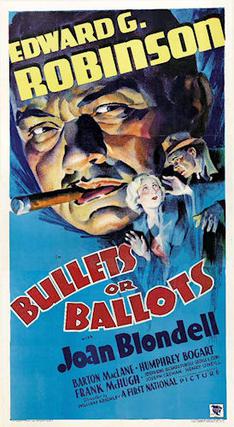
Bullets or Ballots is a 1936 American crime thriller film starring Edward G. Robinson, Joan Blondell, Barton MacLane, and Humphrey Bogart. Robinson plays a police detective who infiltrates a crime gang. This is the first of several films featuring both Robinson and Bogart.

Jungleland USA was a private zoo, animal training facility, and animal theme park in Thousand Oaks, California, United States, on the current site of the Thousand Oaks Civic Arts Plaza. At its peak the facility encompassed 170 acres (69 ha).
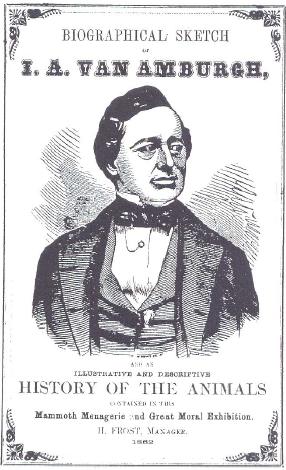
Isaac A. Van Amburgh (1808–1865) was an American animal trainer who developed the first trained wild animal act in modern times. By introducing jungle acts into the circus, Van Amburgh paved the way for combining menageries with circuses. After that, menageries began using equestrian and clown performances in circus rings. Gradually the distinction between circus and menagerie faded.

Caged Fury is a 1948 American drama film directed by William Berke and written by David Lang. The film stars Richard Denning, Sheila Ryan, Mary Beth Hughes, Buster Crabbe and Frank Wilcox. The film was released on March 5, 1948, by Paramount Pictures.



















